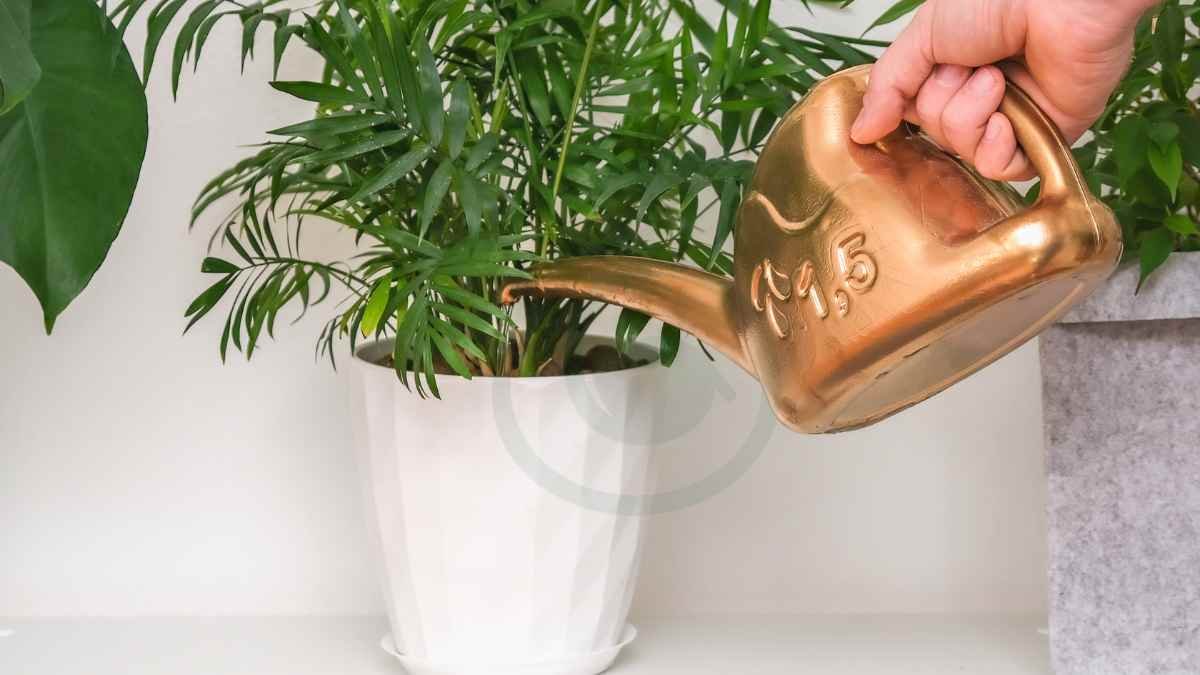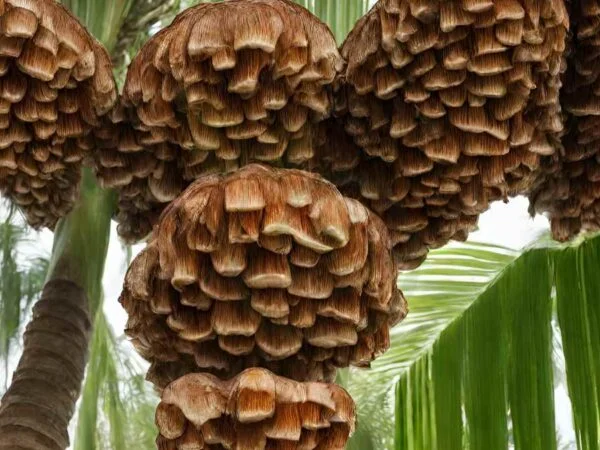When it comes to choosing between parlor palms and areca palms for your indoor space, the differences are stark. While parlor palms thrive in low light conditions, areca palms require bright, indirect sunlight for a tropical feel. Parlor palms are known for their air-purifying qualities, while areca palms are valued for their elegant and feathery fronds that add a tropical touch to any room.
Whether you prioritize easy maintenance or aesthetic appeal, understanding the unique characteristics of these two popular palm varieties will help you make an informed decision that suits your space and lifestyle best.
Key Takeaways
- Choose Based on Size: Consider the space you have available when deciding between Parlor and Areca palms, as their size variations differ significantly.
- Environmental Fit: Match the indoor palms' soil, water, and sunlight preferences with your living conditions to ensure proper growth and health.
- Distinctive Leaf Features: Recognize Parlor and Areca palms by their unique leaf color distinctions and shape variations.
- Maintenance Matters: Understand the care and maintenance requirements of each palm type, including water, light, and brown tips, to make an informed decision.
- Health Benefits: Both palms offer health benefits through air purification, making them excellent choices for indoor spaces.
- Personal Preference: Ultimately, the choice between Parlor and Areca palms comes down to personal preference and the specific aesthetic you wish to achieve.
Origin Differences
Areca Palm Origin
Areca Palm originates from Madagascar, Cuba, and Jamaica, thriving in tropical climates with high humidity. It is known for its exotic and lush appearance.
Parlor Palm Origin
Parlor Palm hails from the green rainforests of Mexico and Guatemala, preferring warm and humid environments. It is popular for its adaptability to indoor conditions.
Size Variations
Areca Palm Height
Areca palm trees can grow up to an impressive height of 6 to 12 meters. It is recognized for its towering presence in outdoor landscapes, demanding ample space to accommodate its vertical growth. This palm species creates a striking visual impact with its tall stature.
Parlor Palm Growth
Parlor palm, on the other hand, grows to a moderate height of 2 to 3 meters, making it an excellent choice for indoor settings. Its compact size allows it to fit perfectly in various indoor spaces, adding a touch of elegance with its graceful growth pattern. This palm variety is suitable for those looking to bring a bit of nature indoors without overwhelming smaller rooms.
Shape and Texture
Leaf Shape
Areca Palm boasts large arching leaves that resemble butterfly wings, adding a tropical feel to any space. On the other hand, Parlor Palm exhibits smaller, dainty leaves that offer a unique visual appeal. The distinct leaf shapes play a significant role in defining the overall look of these plants.
Texture Comparison
The Areca Palm features stems that grow in clusters from bamboo-like trunks, providing an exotic touch to its appearance. In contrast, the Parlor Palm is known for its delicate and lacy leaves, which contribute to its elegant aesthetic. The texture of the leaves plays a crucial role in enhancing the character of these plants.
Leaf Color Distinctions
Areca Color
Areca Palm showcases fresh, vibrant green leaves coupled with slender yellow stems. This combination exudes a tropical vibe with palm trees and enhances its visual appeal. The green and yellow contrast creates a striking look.
Parlor Hue
Parlor Palm features an even green color on both its leaves and stems, symbolizing vitality and freshness. The uniformity in color adds simplicity to its aesthetic, making it visually appealing.
Additional Appearance Features

Trunk Growth
Areca Palm showcases multiple straight stems emerging from the soil, providing a unique structural element. These stems contribute to its overall robustness and growth pattern. Parlor Palm, on the other hand, features a slender green trunk that elegantly supports its lush fronds. The difference in trunk growth between these plants affects their visual appeal and maintenance requirements.
Overall Aesthetics
Areca Palm stands out with its impressive large arched fronds displaying a gradient of green to yellow hues, adding vibrancy to any space. In contrast, Parlor Palm charms with its delicate feather-like bright green fronds that create a sense of tranquility and freshness. Both plants offer distinct aesthetic qualities suitable for various indoor and outdoor settings, enhancing the ambiance with their natural beauty.
Environmental Preferences
Temperature Needs
Areca Palm thrives in temperatures ranging from 60-75°F. Parlor Palm requires a slightly warmer environment between 65-80°F. Maintaining the right temperature is crucial for the optimal growth of these plants.
Sunlight Requirements
Areca Palm enjoys direct sunlight exposure for healthy development. Parlor Palm prefers filtered light to prevent leaf damage. Providing the correct amount of sunlight is essential for their well-being.
Flowering and Reproduction
Areca Blooms
Areca Palm produces tiny yellow flowers on long panicles during summer, adding a pop of color to its foliage. This flowering indicates the plant's maturity and health.
Parlor Flowering
Parlor Palm showcases small yellow balls on stalks in late winter or early spring, signifying the plant's reproductive cycle. Observing these blooms is a rewarding experience for plant enthusiasts.
Care and Maintenance
Watering Needs
Parlor Palm prefers slightly drier conditions between watering sessions. Areca Palm requires regular watering to maintain soil moisture, preventing root rot. Understanding these differences is essential.
Fertilizer Types
Choosing the right fertilizer is crucial for proper nourishment of both plants. Areca Palm benefits from a balanced, nutrient-rich fertilizer while Parlor Palm thrives with slow-release options.
Health and Purification
Air Purifying Abilities
Areca Palm acts as a natural air purifier by filtering toxins, such as formaldehyde and xylene, from the air. This plant is particularly efficient in removing harmful substances commonly found indoors. On the other hand, Parlor Palm plays a significant role in improving indoor air quality by absorbing pollutants like benzene and ammonia. Both plants are highly recommended for individuals seeking to create a healthier living environment.
Pests and Diseases
Areca Palm is prone to infestations by spider mites and mealybugs, which can damage the plant if not addressed promptly. In contrast, Parlor Palm may face challenges from pests like scale insects and aphids that feed on its leaves. To safeguard these plants from pests and diseases, it is crucial to adopt preventive measures such as regular inspections, proper watering techniques, and maintaining optimal humidity levels.
Making The Right Choice
Cost Comparison
Parlor Palm is a budget-friendly option, ideal for those looking to add greenery without breaking the bank. On the other hand, Areca Palm tends to be more expensive due to its larger size and exotic origin. Considering your budget constraints is crucial in deciding which plant to bring home.
- Areca Palm: More expensive due to larger size and exotic origin.
- Parlor Palm: Budget-friendly option for plant enthusiasts.
Best Fit for Homes
When it comes to selecting the best plant for your home, consider the available space and lighting conditions. Areca Palm thrives in spacious indoor areas or outdoor landscapes where it can grow freely. In contrast, Parlor Palm is a perfect fit for compact living spaces and offices, thanks to its adaptability.
- Areca Palm: Suitable for spacious indoor areas or outdoor landscapes.
- Parlor Palm: Thrives in compact living spaces and offices.
Summary
In comparing the parlor palm and areca palm, you've learned about their origin differences, size variations, leaf color distinctions, and more. Understanding their environmental preferences, care needs, and health benefits is crucial in making the right choice for your space. Remember to consider factors like space availability, lighting conditions, and maintenance efforts when selecting the ideal palm for your home or office.
Ensure you provide adequate light, water, and care based on the specific requirements of your chosen palm. By following the guidelines outlined in this comparison, you can enjoy a thriving indoor plant that not only enhances your space aesthetically but also contributes to a healthier environment. Make an informed decision and watch your chosen palm flourish in its new home.
Frequently Asked Questions
What are the main differences in origin between parlor palm and areca palm?
Parlor palms originate from Central America and Southern Mexico, while areca palms come from Madagascar and South India.
How do parlor palm and areca palm differ in size variations?
Parlor palms tend to be smaller, reaching heights of 2-6 feet, whereas areca palms can grow much taller, up to 20 feet.
What distinguishes parlor palm and areca palm in terms of shape and texture?
Parlor palms have a bushy appearance with delicate fronds, while areca palms feature feather-like leaves that arch gracefully.
How do parlor palm and areca palm differ in leaf color?
Parlor palms have darker green foliage, while areca palms exhibit vibrant green or yellow-green leaves.
What additional appearance features set parlor palm apart from areca palm?
Parlor palms have a more compact growth habit with denser foliage compared to the more open and airy look of areca palms.
Image Source: Paid image from CANVA





